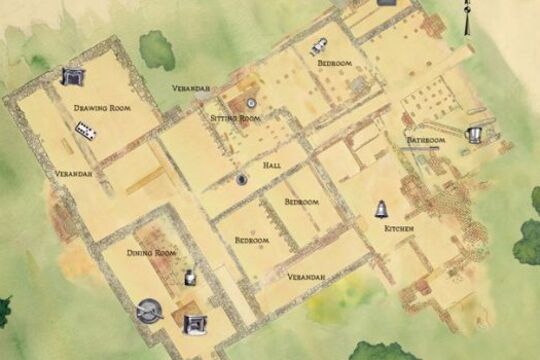Showing 2 items matching "marble"
-

Viewbank: Unearthing a Colonial Homestead
... Audio: Marble fireplace – History...Archaeologist Jeremy Smith explains how the colour of a marble fireplace in a large 19th century house revealed its room’s function...., thimbles and pins. A network of servant’s bells, fragments of marble fireplaces, and pieces of richly decorated plaster cornices reflect the affluence of the Martin family. This story is made up of audio interviews with an archaeologist, an historian ...Viewbank Homestead was one of the first grand homesteads built on the outskirts of Melbourne. Built around 1840, Viewbank was located near the junction of the Yarra and Plenty Rivers in Heidelberg.
The homestead was built in two phases. Originally a four room house, it was renovated and expanded in the 1850s and 1860s after it was acquired by wealthy squatter Dr Robert Martin.
Viewbank was destroyed by a professional demolition team in the early 1920s, long after the Martin family moved away from the area. By then, the house had fallen into disrepair and locals believed that it was haunted. For most of the 20th century, cattle grazed over the ruins and knowledge of the former grand homestead slipped from public knowledge until archaeologists returned to the site to unlock its secrets.
Between 1996 and 1999, Heritage Victoria conducted three excavations at the site with help from archaeologists from Melbourne, La Trobe and Flinders Universities, and more than 140 archaeology students and community members.
The archaeologists uncovered the stone foundations of the house and remnants of hand-made brick walls, fireplaces and other features. A range of artefacts were found during the excavation including children’s toys, coins, gaming tokens, thimbles and pins. A network of servant’s bells, fragments of marble fireplaces, and pieces of richly decorated plaster cornices reflect the affluence of the Martin family.
This story is made up of audio interviews with an archaeologist, an historian and a conservator. They discuss the Viewbank excavation, describe the artefacts found there and explain the process of their conservation at the Heritage Victoria conservation laboratory.
The Viewbank Homestead is listed on the Victorian Heritage Register. For more information on the Viewbank or other heritage sites visit The Victorian Heritage Database.
-

Made in Bendigo, Cold Beer!
... marble ...In 1857 at the height of the gold rush, with people pouring into Central Victoria from all over the world, three brothers from Denmark – Moritz, Julius and Jacob Cohn – founded a small cordial factory in the booming town of Bendigo.
They went on to build an empire and, through introducing lager, which is served cold, to the country, changed the drinking preferences of Australians.
Cordial was a necessity at the time as water was considered unpalatable. The Cohn cordial products were successful and the brothers went on to produce other staples such as fruit preserves. The Cohn Brothers were canny businessmen and at the peak of their success Cohn products were sold across the country and exported to the United Kingdom and Asia. The brothers went on to hold prominent positions on the local Council, and were part of the group that founded the Bendigo Land and Building Society, which became the Bendigo Bank.
Traces of the impact that Cohn products had on the daily lives of Australians, particularly those in Central Victoria, can be found in vintage bottles, wooden crates and signs that have been collected and preserved.
The legacy of their business and civic activities are told through interviews with their descendent, Helen Bruinier, Bendigo Art Gallery Curator, Sandra Bruce, and Frank Barr, the sign painter of the Cohn’s Cordial sign in Bridge Street, Bendigo.
